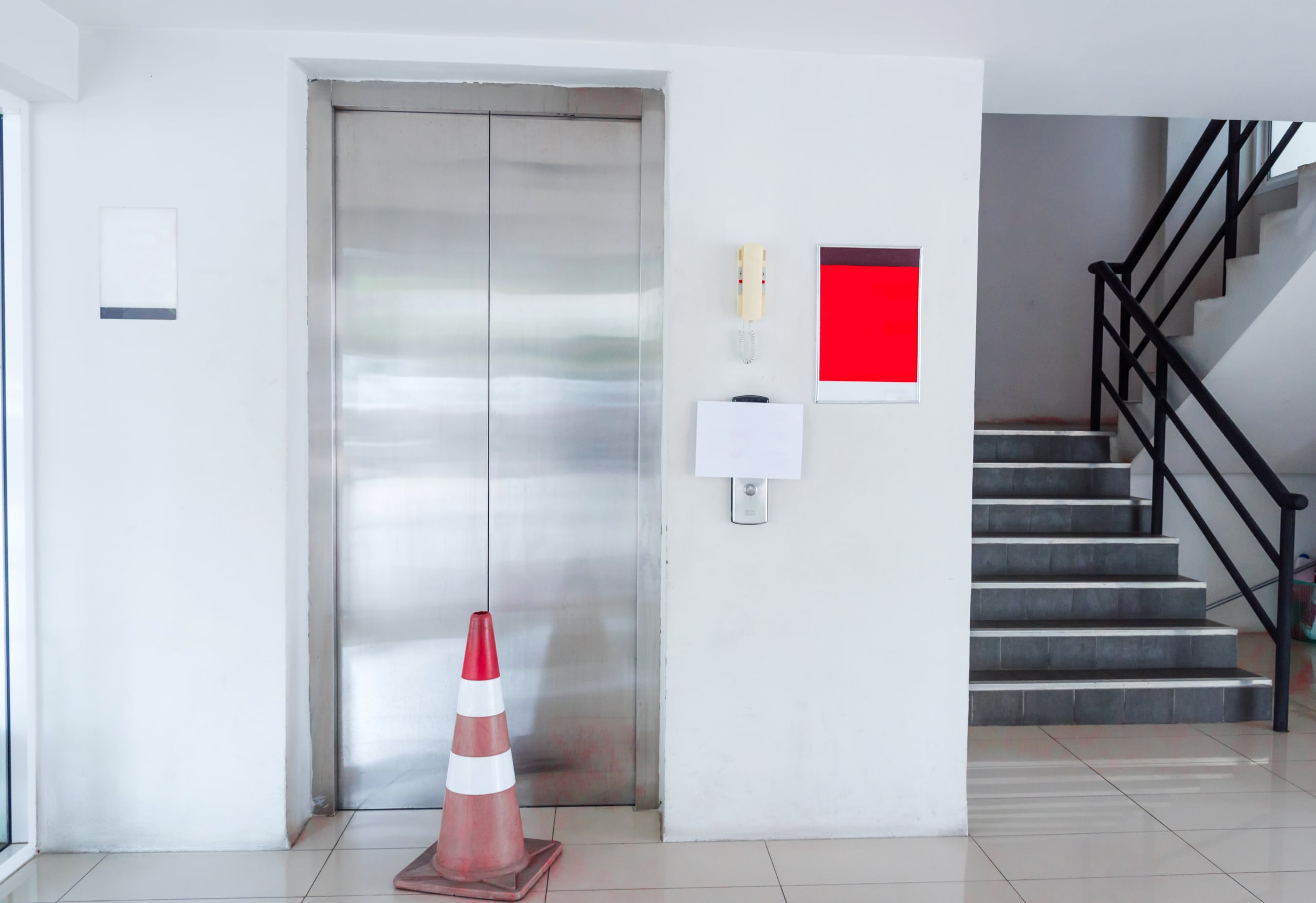Elevator not working. How do we deal with a broken elevator and help our condo residents when the main one is out of service for repairs?
Q: Our elevators aren’t working. We are scheduled to begin an elevator modernization project soon. The project will require that one of the two elevators in our building be out of service for about four months. We will be totally dependent on a single elevator for that entire period.
The contractor for the project is bound by contract to maintain the operation of the single elevator but it’s clear that any piece of machinery is subject to unscheduled failure. And, there’s a probability that our building could experience no elevator service for some unknown period of time while the contractor makes emergency repairs.
Given that possibility, our association must have an elevator emergency plan in place to service all affected residents. What must that plan include? We’re wondering if it’s akin to what the FAA requires in the event a plane is unable to move from the Tarmac to a gate. Airlines must provide certain amenities and services to passengers in a specific period of time.
Elevator not working? You need a service repair contract
A: You’re right. Things break all the time. But, replacing elevators is also important. Let’s assume it will take four months to replace both elevators. Then, replacing the first elevator should take two months. You will then have a new elevator to service the occupants.
However, your building will rely on one older elevator for those two months. Those are the key months to worry about.
Adding a Home Elevator
To meet basic building codes, we’re sure the building must have a staircase, and all other life and safety systems in place for the building. The next thing to ascertain is which occupants would be unable to avail themselves of the stairs or equipment in case of an emergency. The truth is, if there was a fire in the building, the elevators would shut down and residents would have to find a way to exit the building.
But for daily living, it’s hard to imagine being above four or five floors and walking up and down with groceries, babies in strollers or bassinets, with small children or if you are in a wheelchair or otherwise unable to be mobile. You’re right to be concerned.
Survey Resident if Elevator Isn’t Working
If the work has to be done, you should survey residents to find out their preferences and needs. Develop a plan in case something goes wrong with the single elevator. Then, call a building meeting to discuss the plan with the occupants and tell them how the building intends to get the elevator working again. It’s important to be transparent about what you can and cannot offer.
It’s possible that residents who may be impacted the most might decide to move out for those two months. Or, if they decide to stay, you’ll agree to work with them individually to provide assistance or get them what they need (groceries or prescriptions, for example) if the elevator is out for more than a day.
Elevator Not Working? You may have to call the fire or police department
If there’s an emergency, you’ll have to rely on the local fire and police departments. And, you may want to discuss the situation with them ahead of time to get feedback and suggestions on how you might to lessen the impact on them and on the residents. Again, share their feedback at the building meeting.
These are all common sense ideas designed to make residents feel included and heard. None of them are legally required. Unfortunately, sometimes the best plans can’t address every contingency.
Elevators Break. You May Have to Carry Residents
The elevators need to be fixed and there may be nothing you can do if during that repair process, the working elevator suffers a failure. That could happen but you’ll have to make sure the contractor that’s working on your elevators is equipped for that possibility and that repair parts are available. We can foresee a situation where the working elevator fails and a repair part is not readily available.
If the good elevator fails and it could take days or weeks to make the repair, the building needs a plan in place to help those residents with mobility issues or unique situations. During the time the elevator is out of order, some residents may need to move in with friends or relatives. We don’t see what else the building can do other than work with reliable contractors, have plans in place for the “just in case” situations and let the residents know that it could happen so that the residents can make their own contingency plans.
We hope the elevator repair process goes smoothly and your contingency plans are complete. Just in case they aren’t, here are a few suggestions for creating your working plan.
8 Tips for Creating an Emergency Plan when the Elevator Isn’t Working
Here are some tips for an emergency plan when an elevator stops working in a high-rise condo building:
- Identify residents who may need extra assistance, such as seniors, people with disabilities or health conditions. Make a plan for checking on them and assisting them down the stairs if needed.
- Keep emergency supplies near stairwells on each floor. This could include bottled water, flashlights, blankets, etc. Anything that may help if someone gets stuck or needs to rest during evacuation.
- Test cell phone signals in stairwells. Can calls/texts be made reliably? If not, designate volunteer runners who can alert emergency services.
- Practice the evacuation plan. Do a timed test run down the stairs to estimate how long full evacuation would take.
- Assign designated helpers for each floor to assist anyone struggling with the stairs. They should be easily identifiable (vests, hats, etc).
- Mark stairwells clearly with floor numbers and directional signs pointing to exits. Add markers on railings so people can count floors during descent.
- Set up a buddy system so residents pair off to assist each other. Make sure everyone has at least one designated buddy.
- Listen for announcements and alerts from building management. Follow directions and proceed calmly to nearest usable exit.
Having an emergency action plan in place can help avoid panic and ensure a safe evacuation. Make sure all residents are informed and prepared.
©2023 by Ilyce Glink and Samuel J. Tamkin. Distributed by Tribune Content Agency. C1604







Leave A Comment